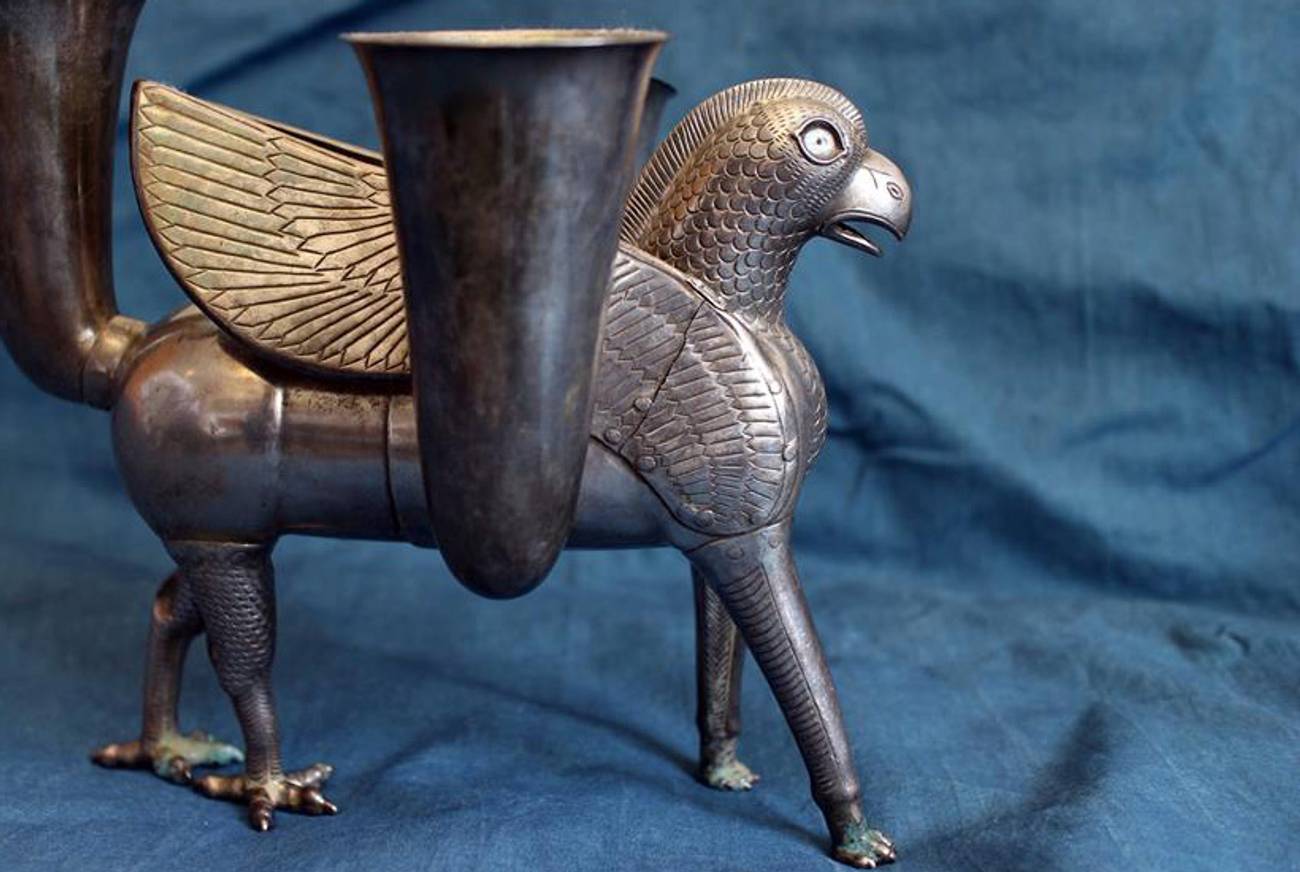We Gave Iran an Antique as a Token of Goodwill. Only Problem? It’s Fake.
The ‘ancient’ griffin—given by the U.S. to Iranian President Rouhani—probably doesn’t date back to earlier than 1999




Sometimes an ancient artifact symbolizes more than its admirers necessarily imagine. Take for example the silver griffin that was returned by the United States to Iran as a gesture of respect and—at least according to tea-leaf readers—a sign of an emerging thaw between the two nations.
There’s only one problem: It’s a fake.
Not only is it a fake, it’s a bad fake. The saga of the griffin, from its production to its much-touted return to Iranian President Rouhani during his recent visit to New York, demonstrates how fakers of ancient art fool the gullible wealthy with the connivance of museums and scholars. More profoundly, it shows how ancient (or not so ancient) artifacts are made to carry cultural and diplomatic weight, in this case for a deeply problematic opening in relations between the United States and Iran.
A definitive publication by retired Metropolitan Museum of Art curator Oscar White Muscarella clearly demonstrates that what is alleged by even the U.S. State Department to be a 2,700-year-old artifact from Iran is actually a modern fake, dating back to, at the earliest, 1999. The griffin was first seen in Geneva in the gallery of prominent Iranian art dealers and in 2002 was purchased by a wealthy New York collector, who not coincidentally was a trustee of the Met. Not confident about the artifact’s bona fides, the collector asked the dealers to provide authentication. Three experts were produced who promptly attested that the object had been produced in western Iran and dated to ca. 700 B.C.E.
But when the griffin arrived in New York in 2003, one of the Iranian-Swiss dealers was arrested by the Department of Homeland Security on the charge of falsifying the object’s place of origin. The next year he pleaded guilty to falsely stating that the griffin had originated in Syria rather than Iran and received one year of probation and a fine of $5,000. The buyer got her money back. The artifact was seized but the market, the game, was barely disturbed.
Then the griffin went into Homeland Security’s deep freeze, residing in a Queens warehouse until this fall. While the artifact was inaccessible to scholars and other investigators, a single photograph made available to Muscarella convinced him that it was a fake. Indeed, anyone with passing familiarity with ancient Near Eastern art, or any kind of art, would become suspicious at the merest glance.
The artifact is made of silver sections joined together to form a winged griffin that walks on splayed, clawed feet. Most improbable are three funnels, two on the sides coming out of the body below the wings and one that protrudes painfully from the creature’s rear end. The griffin-as-saxophone design has no parallels in the ancient world, except perhaps among other objects “said to be” from western Iran that have appeared on the antiquities market. It looks crude and absurd and should have led the buyer to ask what sort of nonsense was being pushed on her.
In the case of the griffin’s putative buyer, a trustee and Metropolitan Museum of Art patron, all is forgiven. The system that tears objects out of the ground in Iran, or Syria, Egypt, Afghanistan, Cambodia, or a hundred other countries, is simply too profitable to shut down. The rich and powerful want what they want, the market provides, and scholars and museums play along in exchange for a piece of the action.
Gullibility is an essential human instinct. We want to believe, sometimes so badly that we close our eyes to just how fake or stolen an artifact is. The reality of the artifact itself—and hence true value—is always secondary to the strength of the desire, and to the maintenance of a profitable game. The marketplace always needs buyers and sellers, whether the artifact in question is real or fake, stolen or legitimately marketable. That the same may be true in diplomacy—that the griffin here is as fake as the thawing—is a tragedy even larger and some might even say even more avoidable.
***
Like this article? Sign up for our Daily Digest to get Tablet Magazine’s new content in your inbox each morning.
Alex Joffe is an archaeologist and historian. He edits The Ancient Near East Today website of the American Schools of Oriental Research and is a Shillman-Ginsburg Fellow of the Middle East Forum.
Alex Joffe is a Senior Non-Resident Fellow at the Begin-Sadat Center for Strategic Studies.